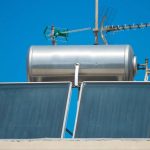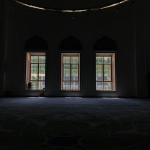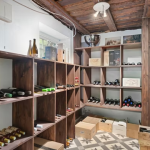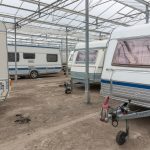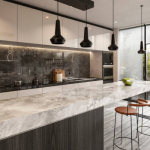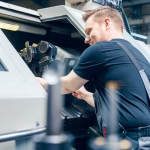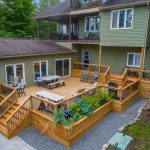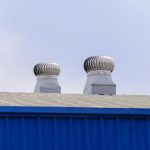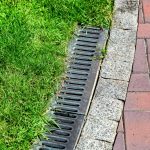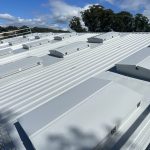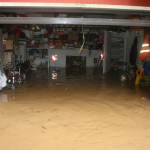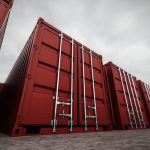Can I Install Solar Panels on my Shed?

Some shed installations are a straightforward yes, but not every shed is ready for solar right out of the gate.
Before assuming you can mount panels on a smaller structure, there are a few practical and safety considerations to work through. That’s why we’ve put together a simple checklist below, followed by a deeper breakdown in the rest of this blog so you know exactly what applies to your property.
- Yes, if the shed roof is strong enough
- Yes, if the shed gets enough sun
- Yes, if the installation meets electrical standards
- Yes, if the cabling distance to the switchboard is suitable
Yes, If Your Shed Roof Can Support the System
Solar panels aren’t extremely heavy, but they still need a roof structure that can safely carry their weight plus the mounting hardware plus wind load forces.
Many garden sheds, carports, and prefab metal structures are built with thin frames that flex easily and weren’t designed to hold anything extra. Before installing solar, the roof needs to be checked for:
- framing strength (timber, steel, or lightweight metal)
- fixing points strong enough for solar brackets
- roof condition (no rust, sagging, or soft spots)
- wind rating compliance for your area
If the shed is solidly built, for example, a garage, workshop, or a well-framed Colorbond shed, mounting solar is doable. But if it’s a lightweight Bunnings-style shed, you’re likely to need reinforcement or a different mounting location.
Yes, If Your Shed Gets Direct Sunlight
Solar panels will only perform well if the shed roof spends most of the day in sunlight. Sheds tucked behind the house, under large trees, or blocked by neighbouring buildings won’t generate enough output to justify the install.
If the shed gets unobstructed sun and has at least one roof face with decent exposure, then it’s a strong candidate for solar installation.
Yes, If the Installation Meets Electrical Standards
Even if the shed is structurally sound, the solar system still needs to comply with Australian electrical standards (AS/NZS 3000 and AS/NZS 5033).
Electricians from Wire In Electrical highlight the importance of these requirements, which cover everything from cable protection and isolator placement to earthing, mounting hardware, and fire-safety measures.
Shed installations can be a little more complex because of extra conduit runs, increased weather exposure, and the need to ensure every part of the wiring remains fully compliant.
Yes, If the Cabling Distance to the Switchboard Is Suitable
Solar panels on a shed require running cabling back to the home’s main switchboard. If the distance is too long, voltage drop can occur, meaning the system won’t perform properly.
In some cases, installers may need to trench underground, use heavier-gauge cable, or install a sub-board (all of which increase cost). If the shed is reasonably close to the house (or already has electrical feed), the installation is much easier. As long as voltage drop can be kept within allowable limits, a shed-mounted solar system works perfectly well.
When Solar on a Shed Is Not Allowed
No, When a Licensed Installer Declines the Job for Safety Reasons
If the roof is unsafe to access — e.g.:
- asbestos sheeting
- brittle tiles
- severe rust
- unsafe ladder points
- unstable footing or slope
…installers are required to refuse the job.
No, When the Shed Roof Angle or Orientation Makes the System Non-Compliant
If the roof:
- is almost straight up and down, so the panels can’t catch much sun
- is really flat unless you add tilt frames, which makes the system less effective
- faces deep south with no other spot to mount panels, meaning it barely gets direct sunlight
…then the system won’t perform properly and might not meet the basic standards needed for a safe, reliable setup.
No, When the Shed Is in a Heritage Overlay or Restricted Zone
The first step is to check if your building is on the State Heritage Register or under an Interim Heritage Order.
If it is, you then need to see whether your solar installation is exempt under the Heritage Act 1977.
- If the work is exempt, you can go ahead as long as you follow the conditions that apply.
- If it isn’t exempt, you’ll need to apply for formal approval under Section 60 of the Heritage Act before any installation can proceed.
- If your property is not state-listed, the next step is to check with your local council, as some councils allow solar installations without a development application.
Once you’ve worked out which box your property fits into, it’s simply a matter of following the council or heritage guidelines from there.
No, When the Shed Doesn’t Get Enough Sunlight to Make Solar Worthwhile
Sheds tucked under large trees, positioned in a deep valley, or facing a purely southern aspect (in Australia) won’t generate enough energy for a system to perform properly.
Even with good equipment, limited daylight exposure means poor ROI.
The type of appliances you plan to run also matters. Low-draw tools, lights, and chargers may be fine, but solar isn’t suitable if you’re trying to power high-demand equipment like pottery kilns, large heaters, or induction cooktops. In these situations, the system won’t produce or store enough energy to run those appliances safely or consistently.
Is Your Shed Strong Enough for Solar?
Many sheds aren’t built to handle much additional weight, but that doesn’t automatically rule out a solar installation. Your installer will take a close look at the roof and its framing to see what’s possible. If the shed needs reinforcing, you’ll get clear advice on how to bring it up to standard so the system can be installed safely.
ShedBlog is packed with helpful guides for shed owners. If you’re exploring options like solar on a shed, you’ll find more useful info here.





